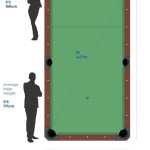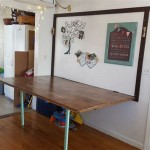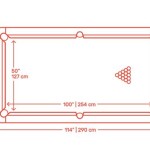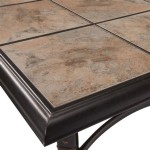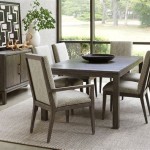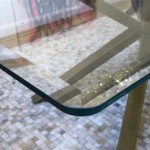Round Glass Table Top Sizes Chart: A Comprehensive Guide
Round glass table tops offer an aesthetic appeal and functional surface for a variety of applications, from dining tables to decorative accents. Selecting the correct size is crucial for achieving both visual harmony and practical usability. This article provides a comprehensive guide to navigating round glass table top sizes, offering insights into common dimensions and factors to consider when making a purchase.
Understanding the nuances of round glass table top sizing involves considering not only the intended use but also the existing base or surrounding space. An improperly sized glass top can disrupt the balance of a room or make a table impractical for its intended purpose. This guide will address common sizes, measurement techniques, and relevant considerations for ensuring the selection of the ideal round glass table top.
Common Round Glass Table Top Sizes and Their Applications
Round glass table tops are available in a wide range of sizes, each suited for specific functions. The most common diameters range from small accent tables to large dining surfaces. Understanding these common sizes and their typical applications can help narrow down the options when selecting a suitable glass top.
Small Accent Tables (12-24 inches): These smaller dimensions are often employed for side tables, plant stands, or decorative accents. A 12-inch diameter is typically sufficient for holding a lamp or a small decorative item. Sizes between 18 and 24 inches are suitable for accommodating beverages and snacks alongside a seating area.
Coffee Tables (30-48 inches): Round glass coffee tables typically fall within this size range. A 30-inch diameter is suitable for smaller living spaces, while a 48-inch diameter provides ample surface area for larger rooms and more frequent use. The height of the base should also be considered to ensure comfortable reach from surrounding seating.
Dining Tables (48-72 inches): For dining purposes, round glass table tops typically range from 48 inches to 72 inches. A 48-inch table can comfortably seat four people, while a 60-inch table can accommodate six. A 72-inch diameter provides sufficient space for eight diners. It is important to consider the footprint of chairs when determining the appropriate size for a dining table.
Large Round Tables (72 inches and up): Larger round glass table tops, exceeding 72 inches in diameter, are suitable for grand dining rooms or conference settings. These larger tables can accommodate a significant number of people and often serve as a focal point within the space. Structural support and weight distribution become critical considerations at these larger sizes.
Beyond these common sizes, custom dimensions are also available to meet specific needs. Custom-cut glass allows for precise tailoring to unique base designs or unusual spatial constraints. It is crucial to provide accurate measurements when ordering custom-cut glass to ensure a proper fit.
Measuring for a Round Glass Table Top: Ensuring Accuracy
Accurate measurement is paramount when selecting a round glass table top. Whether replacing an existing top or designing a new table, precise measurements will prevent costly errors and ensure a seamless fit. The following steps outline the process of measuring for a round glass table top:
Measuring an Existing Table Top: If replacing an existing glass top, the simplest method is to measure its diameter. Using a measuring tape, extend it from one edge of the circle across the center to the opposite edge. Ensure the tape is held taut and passes directly through the center point to obtain an accurate diameter. Repeat the measurement at several points to confirm the circle is perfectly round. If the circle is slightly oval, take both the longest and shortest diameter measurements and average them to determine the appropriate size.
Measuring for a New Base: When selecting a glass top for a new base, consider the dimensions of the base itself. The glass top should extend beyond the base to provide ample legroom and visual balance. A general rule of thumb is to allow for an overhang of at least 6-12 inches on each side of the base. For example, if the base has a diameter of 30 inches, a glass top with a diameter of 42-54 inches would provide an appropriate overhang.
Accounting for Space Constraints: Evaluate the surrounding space before determining the final size. Consider the flow of traffic around the table and ensure there is sufficient space for chairs to be pulled out without obstructing walkways. Use masking tape to mark the proposed dimensions on the floor to visualize the table's footprint and assess its impact on the surrounding area. It is better to err on the side of slightly smaller than too large, especially in confined spaces.
Considering the Base Type: The type of base also influences the appropriate glass top size. Pedestal bases often require larger glass tops than four-legged bases to maintain stability. Multi-legged bases offer more support and can accommodate larger glass tops without compromising stability. Ensure the base is structurally sound and capable of supporting the weight of the glass.
When communicating measurements to a glass supplier, be explicit about the units used (inches or millimeters) and specify whether the measurement represents the diameter or radius. Providing clear and accurate information will help prevent misunderstandings and ensure the correct size is fabricated.
Key Considerations When Choosing a Round Glass Table Top
Beyond size, several other factors contribute to the selection of an appropriate round glass table top. These considerations include glass thickness, edge treatments, glass type, and intended use. Addressing these aspects will ensure the chosen glass top meets both aesthetic and functional requirements.
Glass Thickness: The thickness of the glass is a crucial factor that influences its durability and load-bearing capacity. Thicker glass is generally more resistant to breakage and can support heavier objects. For small accent tables, 1/4 inch to 3/8 inch glass is typically sufficient. Coffee tables and dining tables require thicker glass, typically ranging from 3/8 inch to 1/2 inch or even 3/4 inch for larger sizes. When selecting a glass thickness, consider the weight of the objects that will be placed on the table and the span of the glass between supporting points.
Edge Treatments: The edge treatment of the glass table top affects its appearance and safety. Several edge options are available, including flat polished, beveled, pencil polished, and ogee edges. A flat polished edge provides a clean, modern look and is the most cost-effective option. A beveled edge adds a decorative touch and can enhance the visual appeal of the table. A pencil polished edge offers a smooth, rounded profile that is safer to touch. An ogee edge provides an ornate, traditional look. The choice of edge treatment depends on the desired aesthetic and the overall style of the table.
Glass Type: Different types of glass offer varying levels of clarity, durability, and safety. Clear glass provides a transparent surface that allows the base to be visible. Low-iron glass offers exceptional clarity and minimal color distortion, ideal for showcasing intricate base designs. Frosted glass provides privacy and diffuses light, suitable for applications where discretion is desired. Tempered glass is a safety glass that is significantly stronger than annealed glass and shatters into small, blunt fragments when broken. Tempered glass is recommended for all table tops, especially those used in high-traffic areas or where children are present. Laminated glass consists of two or more layers of glass bonded together by an interlayer, providing enhanced safety and sound insulation.
Intended Use: The intended use of the table significantly influences the choice of glass type, thickness, and size. A dining table requires a thicker glass top than an accent table to withstand the weight of dishes and utensils. A coffee table used for games or puzzles may benefit from a scratch-resistant coating. A table placed outdoors should be made of weather-resistant materials and sealed to prevent moisture damage. Consider the specific needs and demands of the intended application when selecting a round glass table top.
By carefully considering these factors, it is possible to select a round glass table top that not only complements the décor but also provides lasting functionality and safety. Consulting with a professional glass supplier can provide valuable guidance and ensure the selection of the most appropriate glass top for the specific application.

42 Inch Round Glass Table Top 1 3 Thick Ogee Edge Polish Clear Com

51 Modern Round Glass Dining Table For 4wishgray Tabletop With Black X Carbon Steel Base China Furniture Made In Com

Choosing The Right Table Size Cafe Tables

Reviews For Fab Glass And Mirror 54 In Clear Round Patio Table Top 1 4 Thickness Tempered Flat Edge Polished W 2 Hole Pg The Home Depot

Table Top Protectors Custom Cut Pencil Ogee Wave Edges Pads Glass

Gheo Round Glass Dining Table Italy Dream Design

Rules Of Thumb For Rugs Under Round Dining Tables Inspiration

Murano Glass Display Plate With Red Orange Murrine Oval Shape

Tablecloth Size Calculator Williams Sonoma Taste

Litton Lane 24 In Black Round Glass Clock End Table With Map Background And Clear Top 90795 The Home Depot

